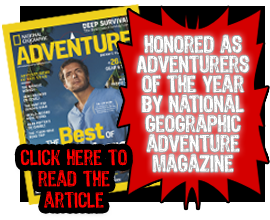I have to admit, when I first arrived in Ulaanbaatar, Mongolia a few weeks ago, what I encountered was far from what I expected. Honestly, I do not really know what I expected Ulaanbaatar to be like. I did not know much about the city, it’s history, or what the future held in store for it. I guess I expected Ulaanbaatar to be similar to the Mongolia we experienced in the Gobi – wild, untamed and still stuck somewhere in history. What I found was quite the opposite – a booming city, ripe with economic development, modern buildings, cosmopolitan cafes and an energetic nightlife.
Mongolia’s history, apart from the days of Chinggis Khan and the ever expanding empire, is actually quite interesting. For the better part of the last 200 years, Mongolia has been stuck in between the sometimes conflicting power struggles of two of the world’s superpowers: Russia and China. From the 17th through the 19th centuries, the Mongolians suffered under the oppressive rule and occupation of the Manchus and the Qing Dynasty until its collapse in 1911. Even after the fall of the Qing Dynasty, the Mongolians still suffered at the hands of the Chinese. Fed up with their situation, the Mongolians approached western powers in Europe and the United States for assistance in expelling the Chinese, however, such assistance was refused. A few years later in 1917, the October Revolution in Russia swept Vladimir Lenin and the Bolsheviks into power. Seeing a new opportunity to help them with the Chinese, the Mongolians approached the Bolsheviks who helped them to finally expel the Chinese in 1921. After that, Mongolia became the second communist country in the world, and continued to receive a significant amount of economic and financial support, in addition to political influence, from its northern neighbors until the fall of the Soviet Union in 1989. The fall of the Soviet Union plunged Mongolia into uncertainty and left to fend for themselves, a newly independent Mongolia struggled economically and politically throughout most of the 1990’s.
I guess this is the Ulaanbaatar (which actually means Red Hero) I expected to find… a relic of the Soviet Empire struggling to find its own independent identity and means of prosperity. However, the discovery of rich mineral and other natural resource deposits at the turn of the century has given Mongolia a giant economic shot in the arm. Huge sums of foreign investment as a result of mining and mineral speculation are pouring in and that, coupled with money that educated Mongolians working in Japan, Korea and abroad are sending home, has helped to change the face of Ulaanbaatar in a very short period of time. The rate of economic growth is stifling… enough so that other economic superpowers have warned that Mongolia might be developing too fast. But do not tell Mongolians that… they view it as their time and their brief experience with capitalism has fueled a desire and a demand for high-end luxury items such as expensive clothes, cars and homes, examples of which are becoming much more frequent sights in the city.
I wonder if Sukhbaatar could have envisioned what modern Ulaanbaatar would look like after he drove out the Chinese in 1921
Ironic? – Lenin’s statue is flanked by signs of a booming capitalist economy
There are, of course, some consequences of this economic explosion. Mongolia is still technically a fledgling democracy and I do not think it is much of coincidence that the majority of the richest individuals in the country are also members of parliament. There is a very large gap between the rich and the poor, and most of the actual infrastructure projects such as roads and transportation hubs are still funded by foreign governments and investors with the domestically spared public works finances going well, you can probably guess. In any regard, signs of development are everywhere and the city skyline is growing taller and taller. In fact, the city is growing so fast that we have found guidebooks published within the last year or two to be essentially obsolete. However, not far outside of the city limits, Mongolians still lead a traditional existance, content to maintain their nomadic herding lifestyle in a way that is almost defiant of what is going on in their nation’s capital. One thing is for sure, I definitely would like to return to Ulaanbaatar in a few years to see what has changed, if the development has been sustainable and how much of the Mongolian countryside still exudes a romantic sense of being in times past.


